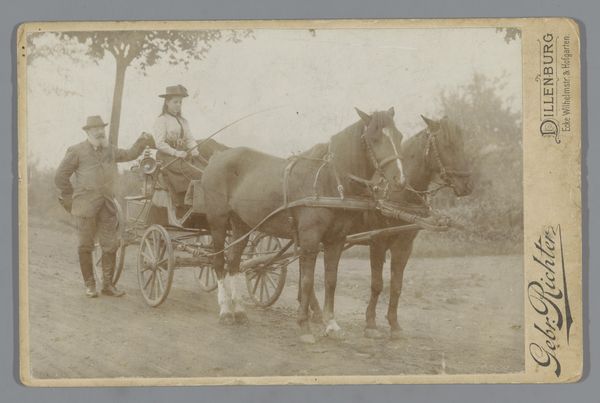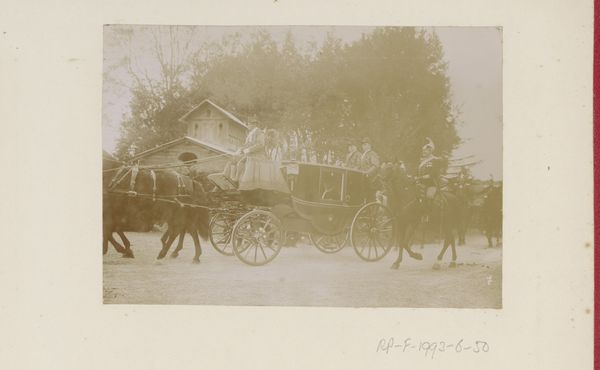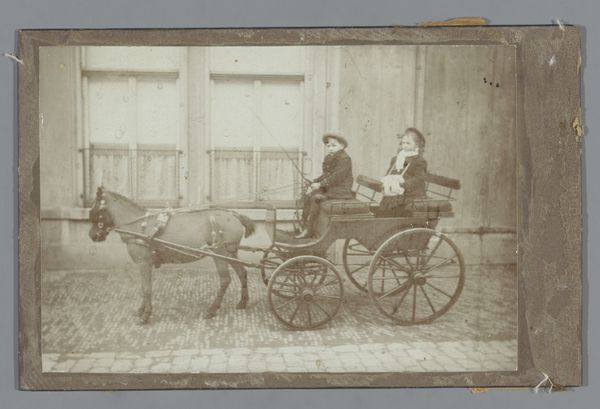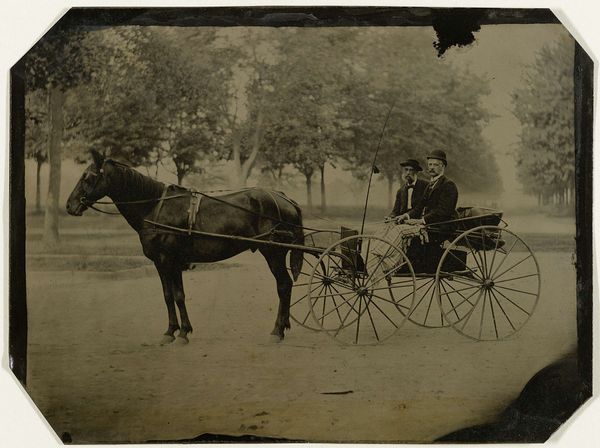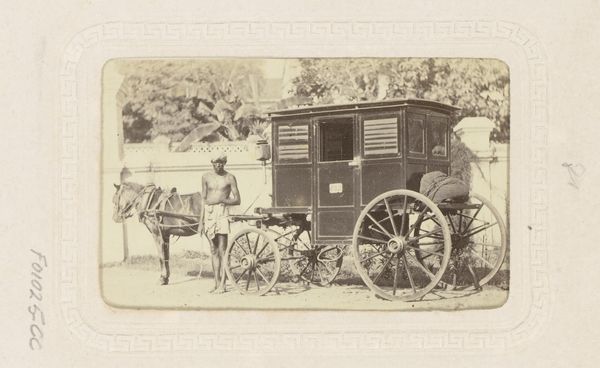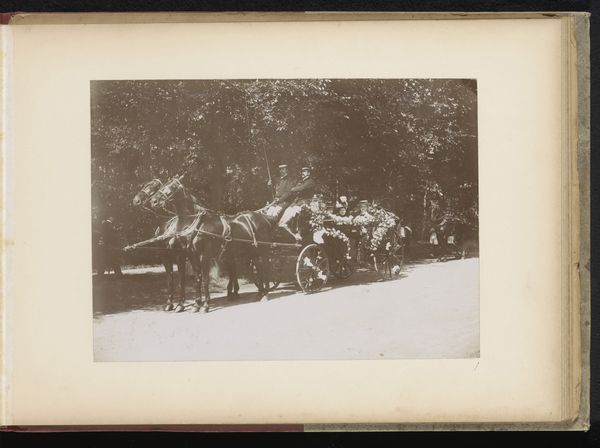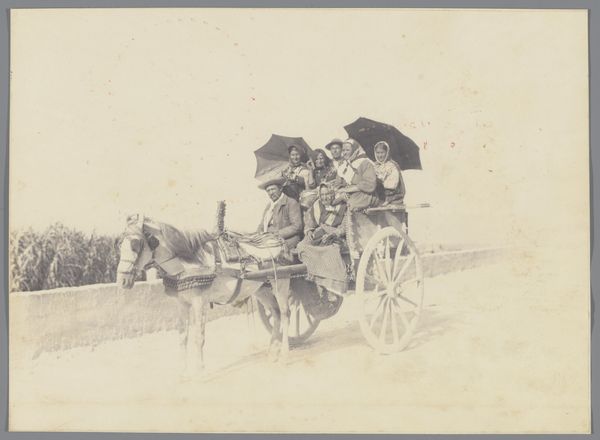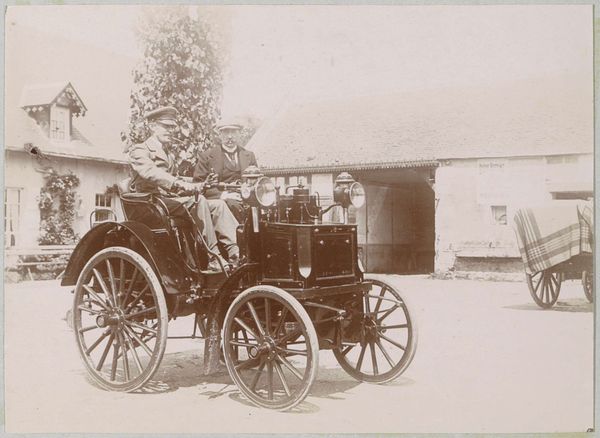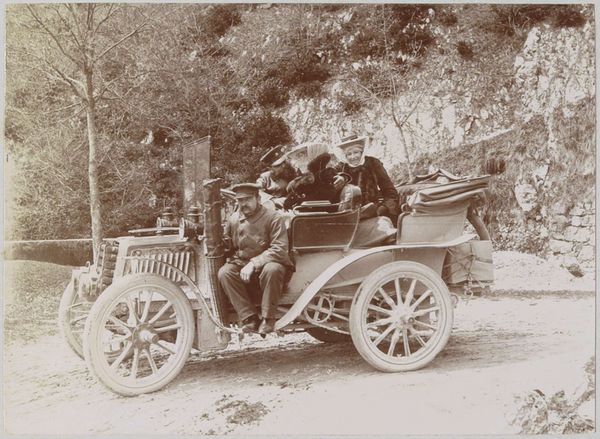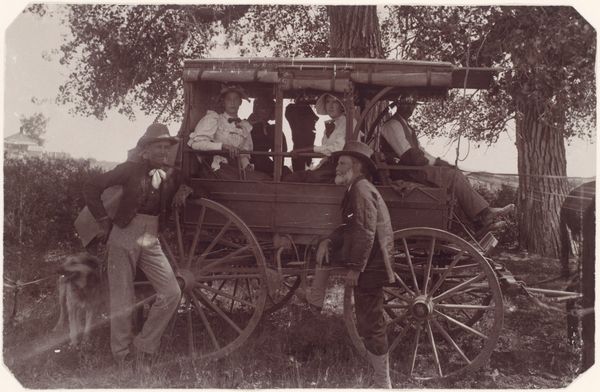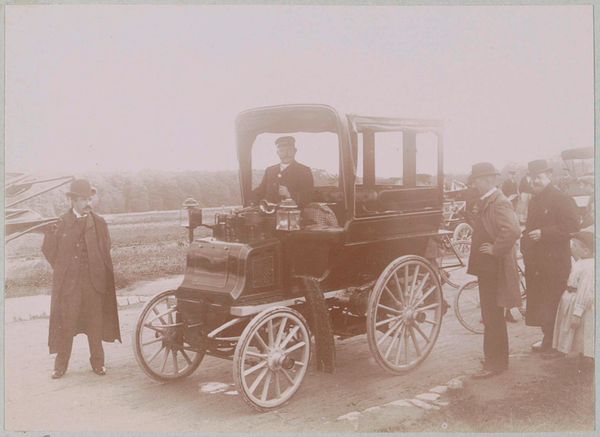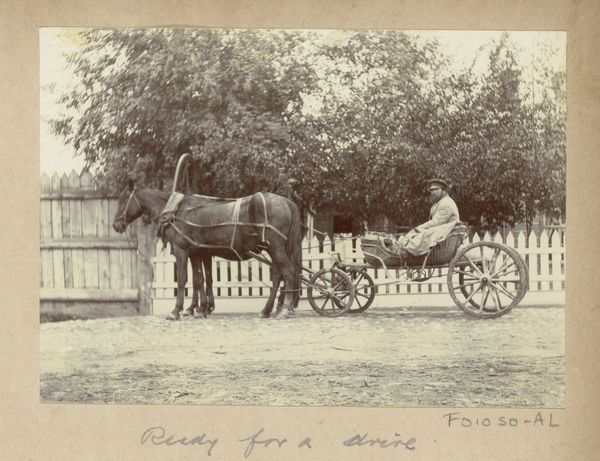
Dimensions: height 117 mm, width 168 mm, height 138 mm, width 188 mm
Copyright: Rijks Museum: Open Domain
Curator: Look at this evocative photograph from 1896, entitled "Familie van den Berg op paard en wagen in Baarn," depicting the Van den Berg family in their horse-drawn carriage. The sepia tones give it such a nostalgic feel. Editor: It certainly does. My initial reaction is to focus on the carriage itself. Look at the structure, the crafted wheels, the visible labor that went into building it. It really speaks to a specific class and era of transportation. Curator: Absolutely. This work really showcases a very specific moment of bourgeois leisure and social standing in the Netherlands. The family is presented in an almost genre-painting-like manner, which offers a glimpse into their social environment and the privileges they enjoyed at that time. The photograph operates as a cultural signifier of wealth and stability. Editor: Indeed, the materiality of it also reveals how intertwined wealth was with resource consumption even back then. What were the trees like whose wood crafted the wagon, how the animal’s needs have been met, and its eventual labor taken into consideration in this very image. Curator: And consider how the composition, with the carefully arranged family members and the picturesque backdrop of Baarn, tells a story not only about themselves but also about gendered roles within the family unit and in society more broadly. The women in their finery, the men perhaps involved in trade and commerce—it prompts us to unpack those underlying societal expectations. Editor: The horse, for instance, is reduced to the role of a motor. The production chain here is visible, in that the natural power it uses is then extracted as labour. A crucial piece is at hand. Curator: I agree; it's important to read beyond the surface and analyze the social and economic implications. It compels us to question systems of power and their manifestations in seemingly simple scenes. Editor: In thinking through the social impact and production context we recognize art is not neutral; this one in particular demonstrates a keen view in how work, ownership, class and representation have merged. Thank you for the detailed account of how representation and status are performed in this pictorial instance, to fully experience photography here is a step towards social realization. Curator: Yes, reflecting on this photo has indeed deepened our understanding of the nuances of Dutch society during the late 19th century.
Comments
No comments
Be the first to comment and join the conversation on the ultimate creative platform.
